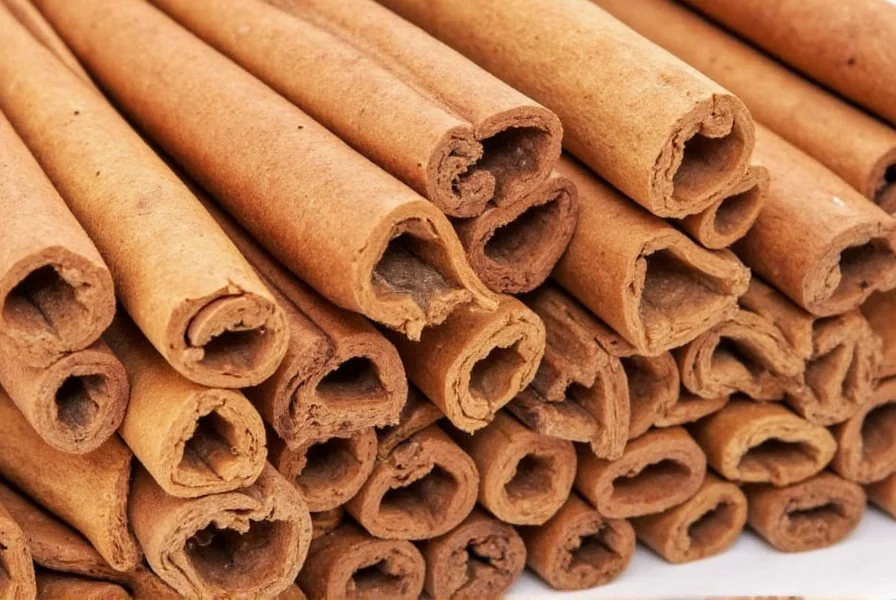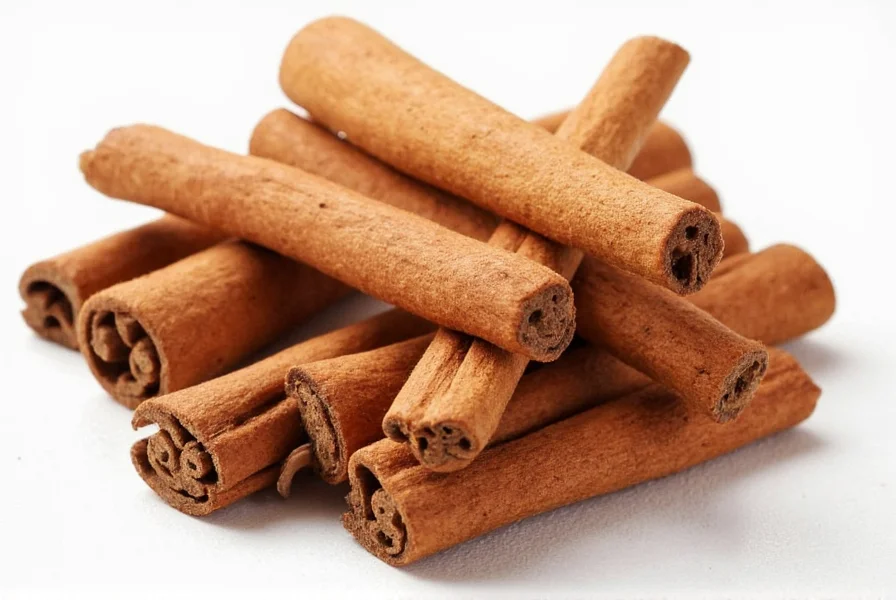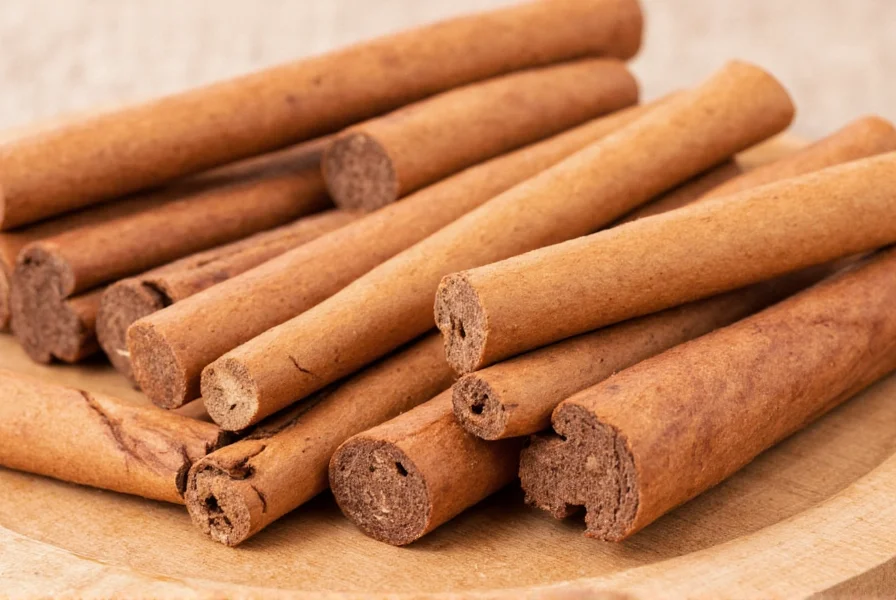Cassia cinnamon, scientifically known as Cinnamomum cassia, represents approximately 95% of the cinnamon consumed globally. This robust-flavored spice originates from China and Indonesia and is easily recognizable by its thick, hard bark that forms tight, single-layered quills. Unlike its more delicate cousin Ceylon cinnamon, cassia delivers a stronger, more pungent flavor that makes it a favorite in baking and savory dishes worldwide.
Understanding Cassia Cinnamon Characteristics
Native to southern China but now predominantly cultivated in Indonesia, cassia cinnamon grows on trees that can reach up to 30 feet in height. The distinctive reddish-brown color and thick bark differentiate it visually from the thinner, lighter-colored Ceylon variety. When purchasing ground cinnamon, cassia typically displays a darker brown hue and more intense aroma compared to the subtler Ceylon cinnamon.
| Characteristic | Cassia Cinnamon | Ceylon Cinnamon |
|---|---|---|
| Scientific Name | Cinnamomum cassia | Cinnamomum verum |
| Origin | China, Indonesia | Sri Lanka, India |
| Bark Thickness | Thick, hard layers | Thin, delicate layers |
| Coumarin Content | High (2,500-8,000 mg/kg) | Very low (50-150 mg/kg) |
| Flavor Profile | Strong, pungent, spicy | Mild, sweet, complex |
| Price Point | More affordable | More expensive |
Health Benefits of Cassia Cinnamon
Research indicates several potential health benefits associated with moderate cassia cinnamon consumption. Studies published in the Journal of the Academy of Nutrition and Dietetics suggest cassia cinnamon may help improve insulin sensitivity, making it potentially beneficial for individuals managing type 2 diabetes. The spice contains powerful antioxidants, particularly polyphenols, which combat oxidative stress and inflammation in the body.
Additional research in Nutrition Research Reviews indicates that cassia cinnamon demonstrates antimicrobial properties that may help fight certain bacterial and fungal infections. Its anti-inflammatory effects could potentially benefit those with inflammatory conditions when consumed as part of a balanced diet.
Understanding Coumarin Content and Safety Concerns
The primary safety concern with cassia cinnamon relates to its coumarin content. Coumarin, a naturally occurring compound, can cause liver damage when consumed in excessive amounts over time. According to the European Food Safety Authority (EFSA), the tolerable daily intake of coumarin is 0.1 mg per kilogram of body weight.
For a 150-pound adult, this translates to approximately 6.8 mg of coumarin daily. Since cassia cinnamon contains between 2,500-8,000 mg of coumarin per kilogram, just one teaspoon (about 2.6 grams) could contain 6.5-20.8 mg of coumarin—potentially exceeding the recommended daily limit. This makes understanding proper cassia cinnamon consumption guidelines essential for regular users.

Culinary Applications and Usage Guidelines
Cassia cinnamon's robust flavor makes it particularly suitable for dishes requiring strong spice presence. It performs exceptionally well in baked goods like snickerdoodles, cinnamon rolls, and apple pie, where its intense flavor can shine through other ingredients. In savory applications, cassia works beautifully in curries, stews, and meat rubs, particularly in Chinese five-spice powder and garam masala blends.
When using cassia cinnamon in cooking, consider these practical guidelines:
- For daily consumption, limit intake to 1/2 teaspoon (about 1.3 grams) to stay within safe coumarin limits
- Rotate between cassia and Ceylon cinnamon to vary your spice intake
- Use cassia in recipes where its strong flavor complements other ingredients
- Store in an airtight container away from light and heat to preserve flavor compounds
Determining Your Personal Cassia Cinnamon Consumption
Individual tolerance to cassia cinnamon varies based on several factors including body weight, liver health, and overall diet. Those with pre-existing liver conditions should consult with healthcare providers before incorporating cassia cinnamon into their regular diet. Children, pregnant women, and individuals taking medications metabolized by the liver should exercise particular caution with cassia cinnamon consumption.
For most healthy adults, occasional use of cassia cinnamon in cooking presents minimal risk. However, those using cinnamon supplements or consuming large amounts daily should consider switching to Ceylon cinnamon, which contains negligible coumarin levels while still providing similar flavor and potential health benefits.

Practical Buying and Storage Recommendations
When purchasing cassia cinnamon, look for products labeled specifically as "cassia" or "Chinese cinnamon" to ensure you know which variety you're buying. Many commercial products simply label their product as "cinnamon" without specifying the type, which typically indicates cassia due to its lower cost and wider availability.
For optimal freshness and flavor retention:
- Buy whole cinnamon sticks when possible, grinding them as needed
- Store in dark glass containers away from heat sources
- Use within 6-12 months for ground cinnamon, 1-2 years for whole sticks
- Check for strong aroma as an indicator of freshness
Conclusion: Making Informed Cinnamon Choices
Cassia cinnamon remains a valuable spice with distinctive flavor and potential health benefits when used appropriately. Understanding the difference between cassia cinnamon vs Ceylon cinnamon allows consumers to make informed choices based on their specific needs and consumption patterns. For occasional culinary use, cassia cinnamon presents minimal risk for most individuals. However, those consuming cinnamon regularly for health purposes or in significant quantities should consider Ceylon cinnamon as a safer alternative due to its dramatically lower coumarin content.
Frequently Asked Questions
How much cassia cinnamon is safe to consume daily?
Based on coumarin content, most health authorities recommend limiting cassia cinnamon to no more than 1/2 teaspoon (approximately 1.3 grams) daily for adults. This amount typically contains about 3-10 mg of coumarin, staying within the European Food Safety Authority's recommended daily limit of 0.1 mg coumarin per kilogram of body weight.
What are the main differences between cassia and Ceylon cinnamon?
Cassia cinnamon has thicker, harder bark that forms single-layered quills, while Ceylon cinnamon has multiple thin layers. Cassia contains significantly higher coumarin levels (2,500-8,000 mg/kg) compared to Ceylon (50-150 mg/kg). Flavor-wise, cassia is stronger and more pungent, while Ceylon is milder and sweeter. Cassia is also more affordable and widely available than Ceylon cinnamon.
Can cassia cinnamon lower blood sugar levels?
Research suggests cassia cinnamon may improve insulin sensitivity and help regulate blood sugar levels, particularly for individuals with type 2 diabetes. However, effects vary between individuals, and it should not replace prescribed diabetes medications. The potential blood sugar benefits must be weighed against coumarin content concerns for regular consumption.
How can I tell if my cinnamon is cassia or Ceylon?
Examine the physical characteristics: cassia cinnamon forms thick, hard, single-layered quills with a dark reddish-brown color, while Ceylon cinnamon has multiple thin layers that look like rolled-up paper with a lighter tan color. Most commercially available "cinnamon" in supermarkets is cassia, as it's more affordable. Unless specifically labeled as "Ceylon" or "true cinnamon," your product is likely cassia.
Is cassia cinnamon safe for people with liver conditions?
Individuals with pre-existing liver conditions should exercise caution with cassia cinnamon due to its coumarin content, which can potentially cause liver damage when consumed in excess. Those with liver disease should consult their healthcare provider before consuming cassia cinnamon regularly and may want to consider Ceylon cinnamon as a safer alternative with negligible coumarin levels.











 浙公网安备
33010002000092号
浙公网安备
33010002000092号 浙B2-20120091-4
浙B2-20120091-4